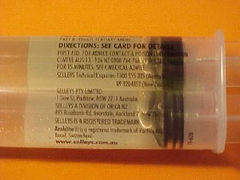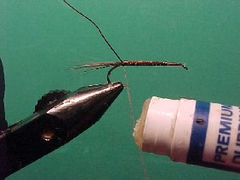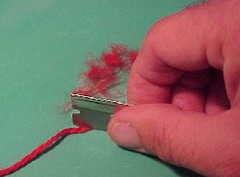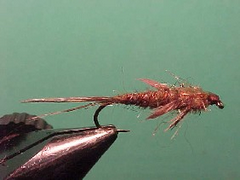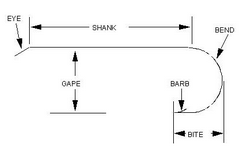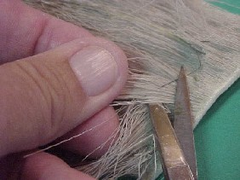Fly tiers pinch
The fly tiers pinch is sometimes referred to as the “cinch” or “up between the fingers” tie in technique. It is a way of tying in materials in a fixed position without allowing previous wraps of thread to loosen or the material to move round the shank of the hook.

